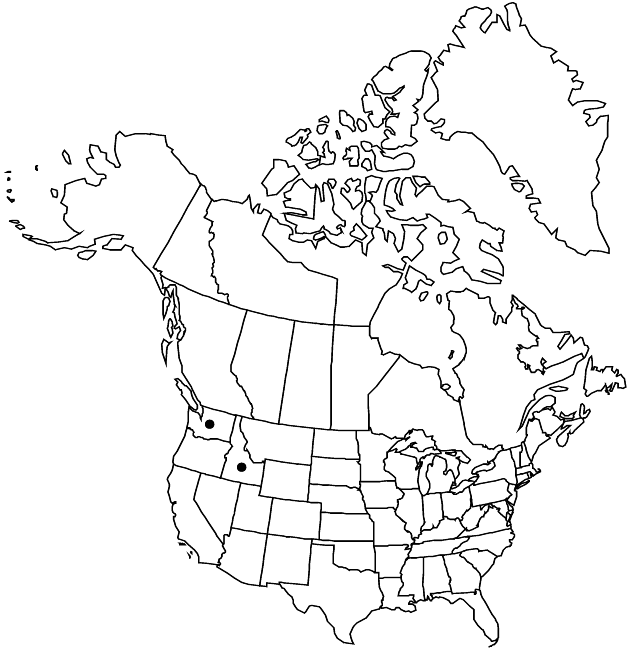Pyrrocoma liatriformis
Leafl. Bot. Observ. Crit. 2: 17. 1909.
Plants 25–70 cm. Stems 1–3, erect, sometimes curved-ascending, sparsely villous to tomentose, eglandular. Leaves: basal blades lanceolate to oblanceolate, 80–310 × 9–30 mm, margins entire or undulate, ciliate; cauline sessile, blades lanceolate, 30–120 × 5–20 mm; faces sparsely tomentose, eglandular. Heads 4–12 in open, racemiform arrays. Peduncles 0–3 cm. Involucres campanulate, 10–23 × 12–20 mm (in axils of leafy bract). Phyllaries in 4–5 series, green, lanceolate, 5–12 mm, unequal, margins entire, ciliate, apices acute, faces villous. Ray-florets 17–25; corollas 6–14.5 mm. Disc-florets 35–60; corollas 7–11 mm. Cypselae narrowly oblong, 4.5–6.5 mm, 4-angled, faces striate, villous; pappi tawny, 5.8–8 mm. 2n = 36.
Phenology: Flowering Jul–Aug.
Habitat: Prairies, roadsides
Elevation: 700–1100 m
Discussion
Of conservation concern.
Pyrrocoma liatriformis is one of the dominants of virgin Palouse prairies and appears to be threatened. It is recognized by its hirsute stems, leaves, and phyllaries, and the small, pedunculate heads.
Selected References
None.
Lower Taxa
"[" is not declared as a valid unit of measurement for this property."[" is not declared as a valid unit of measurement for this property.
